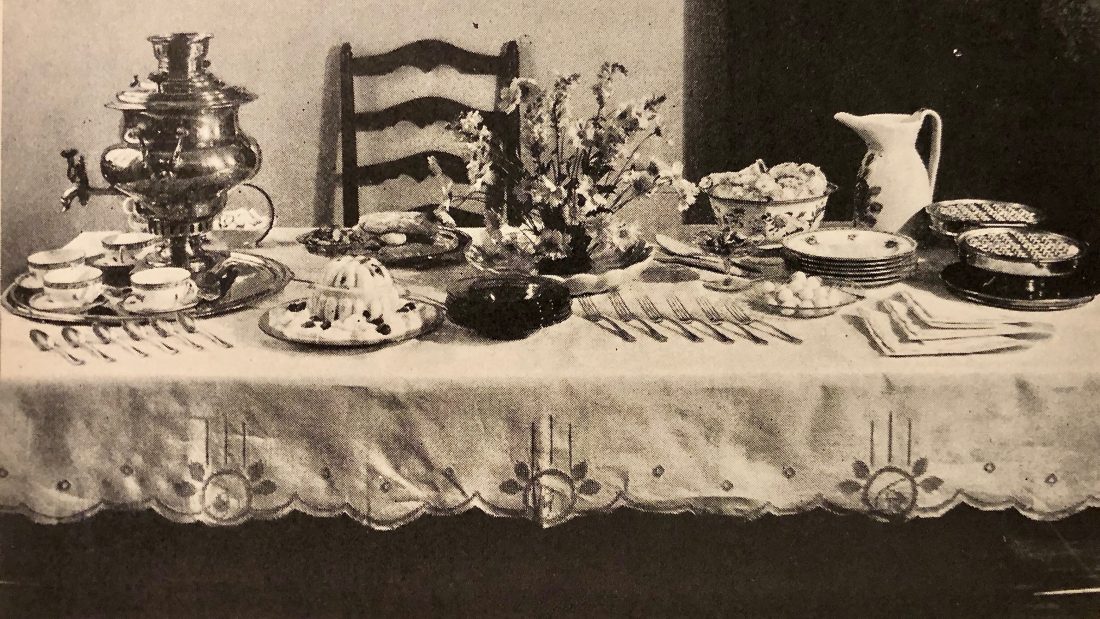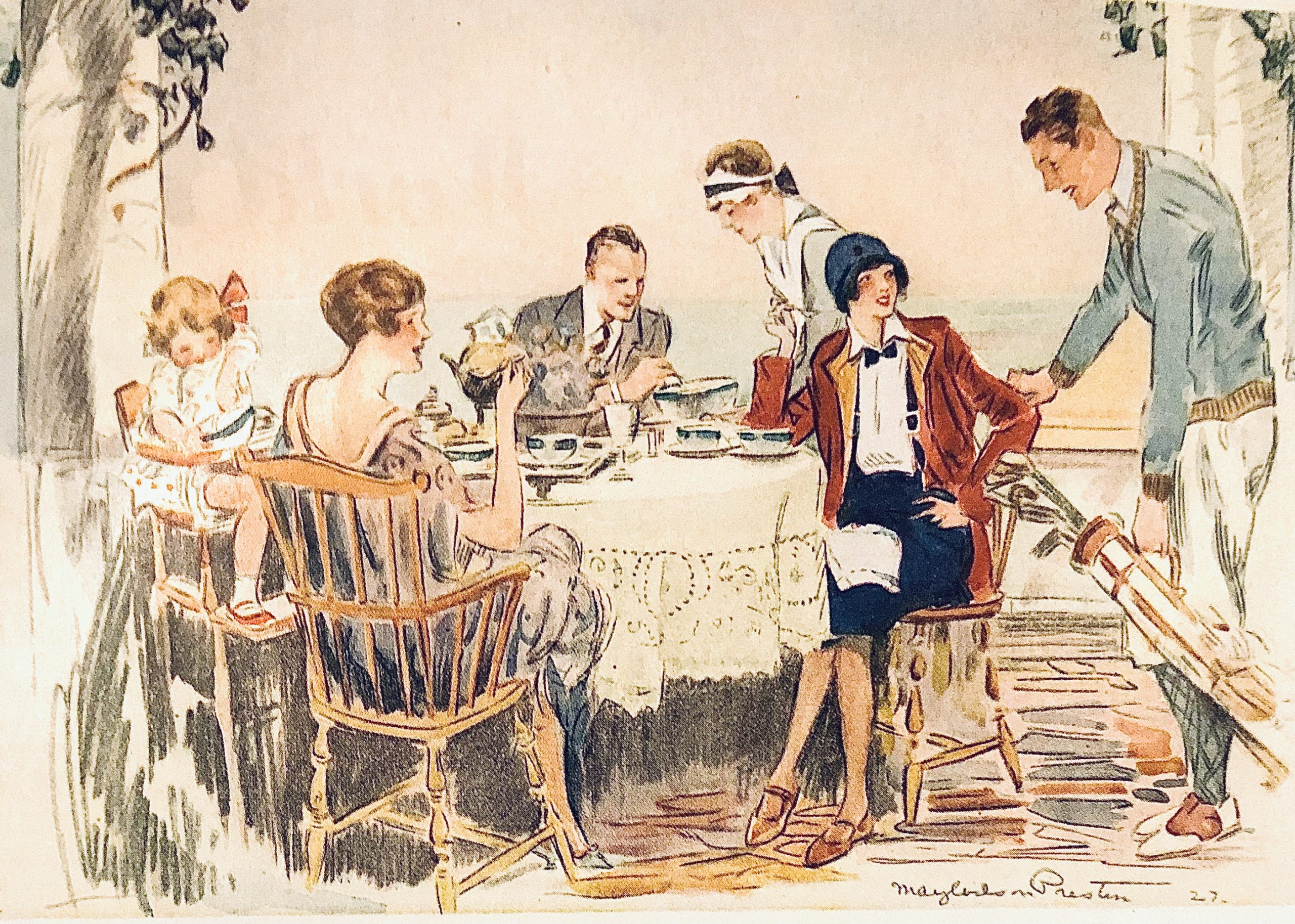“Teas and “Kettledrums”, High Tea and Afternoon Receptions, have come to bear a strong resemblance one to another, in fact to infringe so much upon the same territory that it is very difficult at times to distinguish between them sufficiently to apply the appropriate name.”
Social Etiquette by Maud C. Cooke, 1896
The Kettledrum is the name of a formal coffee. It is very much like a formal tea in that it is a late afternoon entertainment, hosted in the home and by a woman.
Kettledrums were popular in that they were shorter in duration than a reception, so working men were more likely to attend. Teas and Formal Teas had daintier foods and often included a punch, which coffees generally did not. Kettledrums were often though of as more suited for entertaining both men and women, as it was thought that men would enjoy the less froufy foods and manly drink more. Kettledrums became the ideal way to introduce a male artist or author in an “informal” setting. Or to help settle in that strapping young cousin who’d just moved to town. This led to the Kettledrum becoming a popular way to have young ladies meet young men.
Now quickly I must say that in the late 19th century in New York, a Kettledrum was often a less formal, “formal tea” with coffee. In New York alignments with the British held firm and tea drinking never took on the same unpatriotic connotations that they did elsewhere. This let to tea, coffee and punch based Kettledrums appearing in New York. This is an odd anomaly. But even there a Kettledrum would have featured coffee, otherwise they would have just called it an Afternoon Reception. Elsewhere, the Kettledrum was, and still is, synonymous with only coffee.
There is another of those likely untrue stories that the Kettledrum began as a tea by British officers in India, who lacking furniture, sat around a large Indian drum. This story seems particularly unbelievable as British officers often traveled with copious camp furniture and Indian garrisons were very well furnished. Still, this story led to a short-lived and rather silly practice of young men banging on a large silver bowl as if it were a drum at the event. Apparently, the idea was that flirtations could occur unheard and then when a couple wanted to speak quietly to each other they might walk away from the bowl to chat. While there are references to this practice in the second-hand, I can’t find instructions for it anywhere. This is a practice which seems to receive more attention that it deserves, as no etiquette book instructs people to set out a silver bowl at a kettledrum for this purpose and let’s be honest, few would have allowed a silver bowl to be damaged in this fashion, so it was most likely something that happened once and became an entertaining, and so repeated, story.
So, what are the salient differences between a Kettledrum and an afternoon reception? Well, an Afternoon Reception could be hosted by more than just one woman, (a club or organization might host a reception) and were not confined to the parlour. The Afternoon Reception has slightly elevated food requirements as well, with the Kettledrum adhering to the idea that coffees should have plainer and simpler foods.
“The term kettledrum is used for the formal invitation, which is written or engraved on a square card, embellished in one corner with a cup and saucer, or a fete-a-fete set, or a corpulent tea-pot hospitably steaming. The for of wording is as follows:
Mrs. Horace Holmes,
Saturday, February 3d,
20 Park Place. Coffee at 4 o’clock”
Gems of Deportment by Mrs. M.L. Rayne, 1881
As you can see everything is similar to a formal tea, indeed there might even be a tea-pot on the card, but the recipient knows it’s a Kettledrum by the fact that the invitation specifies coffee.
Visiting clothes were expected and women in the late victorian period were encouraged to only remove one glove, because, you know, elegance. Men were given more leeway, owning that some were working stiffs and others were men of the arts or leisure.
The word Kettledrum seems to have fallen out of favor fairly early in the 20th Century, but formal coffees continued long into the 1980’s. They tended to be later in the day and connected with entertainments, so you might be invited to a coffee at someones house prior to going out in a group to a symphony or theater show. This allowed people to elegantly entertain during the evening without the expense of a formal dinner.

This is one of the rare old time entertainments I’d like to see come back. I love coffee and sitting around with friends drinking coffee and having sweets sounds divine. This seems the perfect entertainment for a book club. Someday we’ll see each other again, I’m sure. When we do, let’s make it a kettledrum. Much love, Cheri



